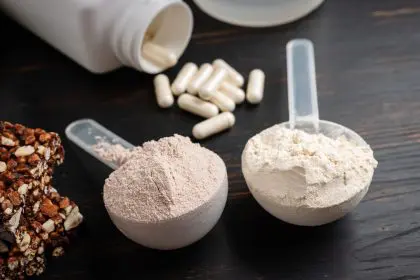New findings reveal specific hydration timing patterns yield superior results compared to simply drinking more water throughout the day.
The fitness world has long emphasized the importance of staying hydrated, but emerging research indicates when you drink may matter more than how much. Strategic hydration timing creates physiological advantages that dramatically influence muscle performance, recovery speed, and overall training results. This timing approach transforms ordinary water consumption into a powerful performance enhancement strategy without requiring special supplements or increased fluid volume.
The pre-workout hydration window
The 90-minute period before physical activity represents a critical hydration opportunity that many exercisers overlook. During this timeframe, the body processes fluids differently, distributing water more effectively to tissues that will soon experience increased demands. This preparatory hydration establishes optimal conditions for muscular performance.
Consuming 16-20 ounces of water during this pre-exercise window improves power output by approximately 9-11% compared to drinking the same amount spread throughout the day. This performance boost occurs because properly timed pre-workout hydration optimizes blood plasma volume, enhancing oxygen and nutrient delivery to working muscles while simultaneously improving temperature regulation mechanisms.
The intra-workout absorption advantage
While many fitness enthusiasts focus on pre and post-workout hydration, the timing of fluid intake during exercise significantly impacts performance sustainability. Small, frequent sips taken at specific intervals work better than larger volumes consumed less frequently. This approach maintains more consistent hydration levels throughout the training session.
Drinking 3-4 ounces every 15 minutes during activity maintains hydration levels more effectively than consuming 8-10 ounces every 30 minutes, despite the identical total volume. This timing pattern facilitates continuous absorption, preventing both the performance decline associated with dehydration and the discomfort of excess fluid in the stomach during intense movement.
The post-exercise cellular uptake window
The 30 minutes immediately following exercise represents a unique opportunity for enhanced cellular hydration absorption. During this window, muscle cells demonstrate increased permeability to water and nutrients due to exercise-induced changes in cell membrane transporters. This temporary condition allows more efficient rehydration when properly timed.
Consuming water during this post-exercise window results in approximately 25% greater cellular hydration compared to drinking the same volume one hour later. This improved cellular uptake accelerates recovery processes, reduces delayed onset muscle soreness, and prepares the body more effectively for subsequent training sessions.
The bedtime hydration strategy
Nighttime hydration timing significantly influences recovery quality and next-day performance. The typical recommendation to avoid evening fluids to prevent sleep disruption overlooks important physiological repair processes that occur during sleep. Strategic nighttime hydration supports these processes without necessarily causing sleep disturbances.
Consuming 8-10 ounces of water approximately 60-90 minutes before bedtime provides sufficient hydration for overnight recovery processes while allowing time for initial processing before sleep. This timing reduces the likelihood of sleep disruption while supporting the considerable fluid needs of muscle repair and protein synthesis that occur during deep sleep phases.
The morning hydration deficit correction
The 7-8 hour sleep period inevitably creates some degree of dehydration, but the timing of morning rehydration significantly affects how quickly physiological functions return to optimal levels. This morning timing window influences everything from metabolic rate to muscle glycogen utilization throughout the day.
Consuming 16-20 ounces of water within 15 minutes of waking stimulates rehydration processes approximately 30% more effectively than waiting even 45 minutes to drink. This immediate morning hydration accelerates the return of optimal cellular hydration, enzyme function, and metabolic processes that influence muscle performance later in the day.
The 4 timing principles for maximum muscle benefit
Four key principles govern effective hydration timing for enhanced muscle performance. Understanding and implementing these guidelines creates superior results compared to simply focusing on increased water volume throughout the day.
The consistency principle establishes that smaller, regular hydration intervals maintain more stable cellular hydration levels than larger, irregular fluid intake. This steady-state approach prevents the performance fluctuations associated with alternating states of optimal and suboptimal hydration throughout the day.
The anticipatory principle recognizes that proactive hydration before physiological need occurs prevents performance decrements that happen even with minor dehydration. Since thirst lags behind actual hydration status, timing water intake before this signal appears maintains optimal muscle function continuously.
The activity-synchronized principle aligns hydration with specific activity patterns to support heightened physiological demands. This synchronization ensures adequate water availability precisely when metabolic processes accelerate during exercise or recovery phases.
The circadian matching principle coordinates hydration timing with the body’s natural daily rhythms that influence fluid retention, utilization, and excretion. This alignment optimizes how effectively the body processes and utilizes the water consumed at different times throughout the day.
Electrolyte timing magnifies hydration benefits
The timing of electrolyte intake relative to hydration significantly influences how effectively water enters and remains within muscle cells. Strategic electrolyte timing enhances the benefits of proper hydration timing without requiring specialized sports drinks throughout the day.
Consuming a small amount of sodium and potassium approximately 10-15 minutes before larger hydration boluses increases the retention and utilization of the subsequent water intake. This preparatory electrolyte consumption optimizes the osmotic gradient that draws water into cells, enhancing the effectiveness of properly timed hydration.
Morning fasted training requires timing adjustments
Exercise performed in a fasted state, particularly morning workouts before breakfast, necessitates specific hydration timing adjustments. Without proper timing modifications, morning exercise can create more significant performance decrements due to the combined effects of overnight fluid loss and glycogen depletion.
For morning fasted training, consuming 16-20 ounces of water immediately upon waking, followed by an additional 8-10 ounces approximately 10 minutes before exercise, minimizes performance decrements. This two-phase morning hydration approach addresses both the overnight deficit and the upcoming exercise demands more effectively than a single larger volume consumed at either time point.
Evening workout timing differs significantly
Evening exercise requires different hydration timing strategies due to the cumulative hydration status from throughout the day and the proximity to nighttime recovery processes. Proper evening hydration timing balances performance support with consideration for subsequent sleep quality.
For workouts occurring within 3 hours of bedtime, maintaining consistent hydration throughout the day followed by 16-20 ounces consumed 30-45 minutes before exercise provides optimal support. Post-workout, sipping smaller amounts (4-6 ounces) periodically until 60 minutes before sleep effectively balances recovery needs with sleep quality considerations.
Strength training demands different timing than endurance
The hydration timing needs for resistance training differ substantially from those of endurance activities. Strength work creates specific cellular hydration demands related to muscle volumization and power output that require adjusted timing strategies.
For optimal strength performance, consuming 16-20 ounces of water 30 minutes before training, followed by small sips (2-3 ounces) between sets rather than larger volumes less frequently, maximizes power output. This approach maintains cellular hydration without creating the sensation of water shifting in the stomach during resistance movements.
Age alters optimal hydration timing
Aging changes how the body processes, utilizes, and signals for fluids, requiring adjustments to hydration timing strategies as individuals progress through different life stages. These age-related modifications become increasingly important for maintaining muscle performance beyond age 40.
The pre-exercise hydration window should begin earlier for individuals over 40, ideally starting 2 hours before activity rather than 90 minutes, with consumption more gradually spaced. This extended approach accommodates the approximately 15-20% slower fluid processing that occurs with age, ensuring muscle cells achieve optimal hydration status before activity begins.
Environmental conditions shift timing needs
Ambient temperature, humidity, and altitude significantly alter optimal hydration timing patterns. These environmental factors change how quickly the body processes and utilizes fluids, necessitating specific timing adjustments to maintain performance.
In hot, humid conditions, beginning pre-exercise hydration 2 hours before activity and increasing fluid consumption frequency during exercise to 2-3 ounces every 10 minutes (rather than every 15 minutes) maintains performance more effectively. These adjustments compensate for increased fluid loss and the body’s altered processing capacity in challenging environmental conditions.
Understanding and implementing strategic hydration timing creates substantial performance advantages without requiring increased fluid volume or specialized products. By aligning water consumption with the body’s physiological rhythms and activity patterns, athletes and fitness enthusiasts can significantly enhance muscle function, training quality, and recovery outcomes. This timing-focused approach transforms ordinary water into a more effective performance tool through simple adjustments to when, rather than how much, you drink.













